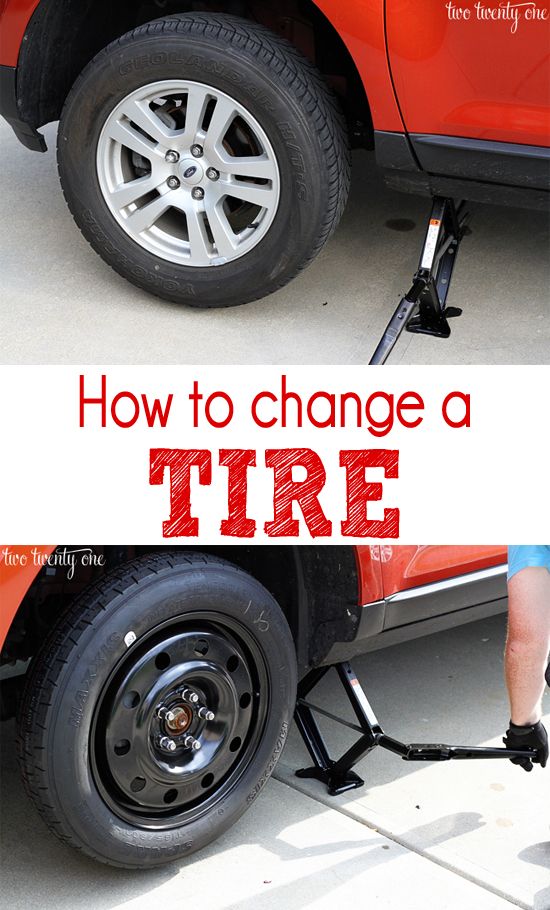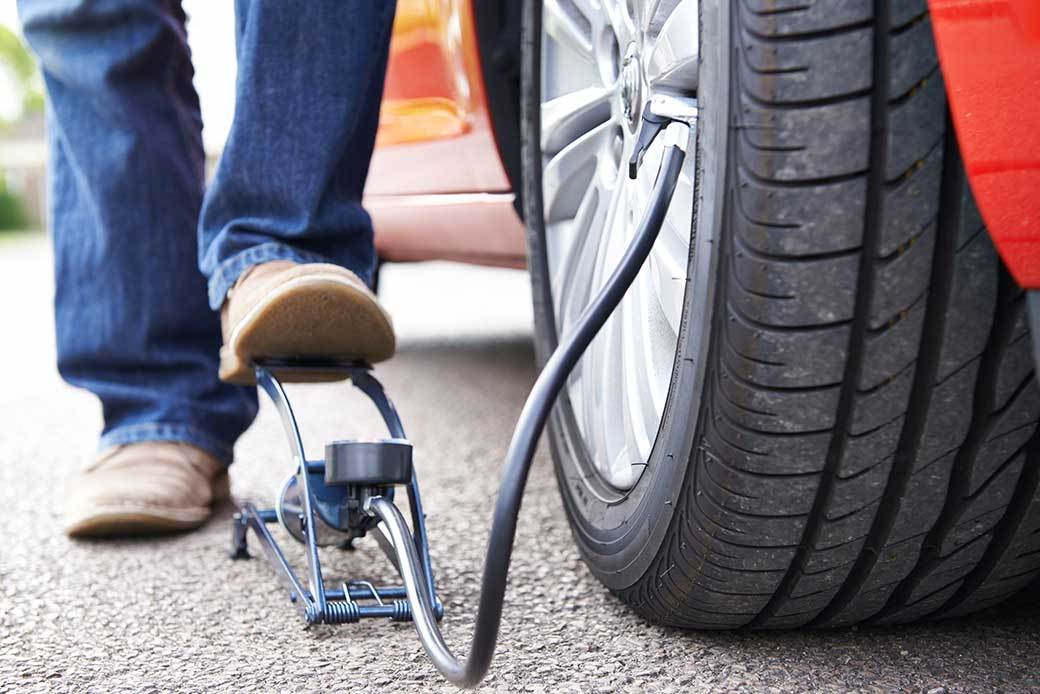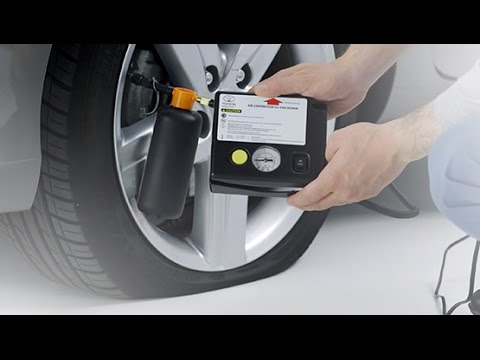My Dad gave me his old winter tires to use this year, but one is completely flat! How do I inflate them?
Will Baldwin · Answered on Nov 09, 2021
Reviewed by Shannon Martin, Licensed Insurance Agent.
That’s very nice of your Dad, winter tires are a smart decision!
The first thing you’ll want to do is inspect the tire for damage. Since the tire is flat, you’ll want to ensure it’s possible to fix any damage. If it is, you have a couple of options. The first is a basic repair kit or remove the tire from the rim and patch it.
If the air is holding at the correct pressure, you should be ready to go!
Something else that could help prepare for winter is a roadside assistance membership with Jerry.
Jerry’s membership provides you with industry-leading roadside assistance, including benefits like towing, lockout service, and a mechanics hotline. To find out if you’re eligible, you can check the app or call one of our friendly agents. You may qualify for a special rate of $50 for your first year!
MORE: What to do if your tire blows out?
Car MaintenanceCar OwnershipCar RepairCar Tires
View full answer
WHY YOU CAN TRUST JERRY
Jerry partners with more than 50 insurance companies, but our content is independently researched, written, and fact-checked by our team of editors and agents. We aren’t paid for reviews or other content.
Browse More Content
Driveshaft Lubrication Cost
Power Steering Fluid Service
Drive Belt Tensioner Replacement
What To Do If Your Oil Is Leaking into Spark Plug Well
Vent Oil Separator: Replacement Cost
Chevrolet Camaro Z28 Insurance Cost
Dodge Intrepid Es Insurance Cost
Tesla Model Y Insurance Cost
Saturn Sw1 Insurance Cost
Honda Civic Se Insurance Cost
Lake Frederick Car Insurance
Dolores Car Insurance
Dry Ridge Car Insurance
Pine Bluff Car Insurance
Dorchester Center Car Insurance
I haven’t fully vacuumed my car since I bought it. I know there are crumbs lurking between my seats. How can I vacuum between my car seats?
I know there are crumbs lurking between my seats. How can I vacuum between my car seats?
Will Baldwin
Nov 09, 2021
I live in a rural area and the closest bank is about 45 minutes away. I want to get a car loan, but I don’t want to go through the hassle of going to the bank several times. Where can I apply for a car loan online?
Eric Schad
Nov 09, 2021
I’m a frugal person, so I don’t like paying more than I have to for just about anything. I’m in the market for a new car and I want the best interest rate possible. How do I get a low APR on a car loan?
Eric Schad
Nov 09, 2021
Browse All Questions
Find instructions for replacing the radio in a 2012 Nissan Altima here, plus tips to protect your sound system and save on insurance.
Kathryn Mae Kurlychek
Sep 28, 2022
The 2022 Toyota Venza comes with five seats and does not offer a third row of seats.
Kathryn Mae Kurlychek
Sep 22, 2022
The street cred you get by driving a 2014 Cadillac Escalade makes it easier to ignore some of its interior shortcomings.
Kathryn Mae Kurlychek
Aug 30, 2022
road safety
National General
Elephant Insurance
Uninsured Motorist Protection
Gap Insurance
Rental Car Insurance
Insurance Shopping
Car Modifications
Mileage
Crash Test Ratings
Grundy Classic Car Insurance
Acts of God
Metromile
Nevada
Flood Insurance
Subrugation
Electric Vehicles
All-Wheel Drive (AWD)
Auto Loan Payments
Direct Auto Insurance
Car Damage
Jumpstarting
Chrysler
Swyfft Insurance
Penalties
Distracted Driving
Safeco
Emergency Brakes
No long forms
No spam or unwanted phone calls
Quotes from top insurance companies
Find insurance savings — it's 100% free
Toyota
Hyundai
Mercedes-Benz
Subaru
Chevrolet
Mitsubishi
You never know when you may experience a flat tire. It can happen to anyone at the most inconvenient time. Maintaining correct tire pressure affects a tire’s wear and improves its performance. Luckily, you can easily inflate almost any tire at your job site if you have an air compressor. Read on to learn how to use an air compressor on your flat tire.
It can happen to anyone at the most inconvenient time. Maintaining correct tire pressure affects a tire’s wear and improves its performance. Luckily, you can easily inflate almost any tire at your job site if you have an air compressor. Read on to learn how to use an air compressor on your flat tire.
You need to know how much air pressure must go into the tire. Most construction vehicles need at least 100 pounds per square inch, or PSI, in each tire. The exact amount might vary depending upon the axle load, number of tires per axle, and weather. Check the vehicle’s owner’s manual for the proper tire pressure amount.
Avoid using the PSI number found on the tire’s sidewall since that expresses the maximum amount of pressure. You need this information to know what type of air compressor to get. A smaller air compressor tank keeps the pressure between 100 to 150 PSI.
A tire gauge can tell you how much compressed air your tires need to have added. If you put too much air into tires, you can experience performance and handling issues. If you don’t put enough air into the tires, they can experience extra friction that raises the rubber’s temperature. Heat is harmful to tires and can cause damage to the steel cords inside. Many tire manufacturers state that for every 3 PSI below the recommendation, you burn 1 percent more fuel and add 10 percent extra tire wear.
If you put too much air into tires, you can experience performance and handling issues. If you don’t put enough air into the tires, they can experience extra friction that raises the rubber’s temperature. Heat is harmful to tires and can cause damage to the steel cords inside. Many tire manufacturers state that for every 3 PSI below the recommendation, you burn 1 percent more fuel and add 10 percent extra tire wear.
When filling up the tires, try to do so when they’re cold. Cold temperatures can give you a more accurate reading. Hot tires show higher air pressure when you use the tire gauge. If you get a flat tire while driving, wait about 30 minutes for the tire to cool. If this is not an option, inflate the tires to 3 PSI over the recommended amount.
Each tire should have a stem cap screwed to the top of the valve stem. Remove the cap and put it to the side, but make sure you don’t misplace it. When the cap is off the valve, even if it’s just for a minute, some of the leftover air could escape. Avoid removing the cap until you’re ready to use the compressor.
Avoid removing the cap until you’re ready to use the compressor.
Typical air compressors run on electrical power. Plug in the air compressor to let it accumulate with air. Smaller units have a two-prong plug, while medium and larger compressors may need a three-prong plug. Make sure you’re using outlets with the correct voltage for the compressor. Running the compressor on the wrong circuit can blow the compressor, circuit, or both. Once you turn on the compressor, you will hear the compressor motor begin to work. Portable units have tires, so you can easily move them around.
Try to situate the compressor near the flat tire since you cannot move the vehicle. Attach the air hose to the compressor and include the quick coupler at the end. This fastener lets you push air into the valve stem. If there’s a safety position on the nozzle, make sure that you activate it. Secure the hose to the valve stem and turn on the machine.
Depending upon how flat the tire is, filling the tire up with air may take some time. Many air compressors have gauges that guide you, so you add the correct amount of air. Some inflators even turn off automatically when the desired air pressure is reached. Digital inflators are another option, and they give you a more accurate reading. Avoid walking away from the compressor while it is running, as you don’t want the tires to overinflate.
Many air compressors have gauges that guide you, so you add the correct amount of air. Some inflators even turn off automatically when the desired air pressure is reached. Digital inflators are another option, and they give you a more accurate reading. Avoid walking away from the compressor while it is running, as you don’t want the tires to overinflate.
While filing up the tire, check the tire pressure occasionally. Most digital inflators automatically monitor the pressure and shut off when the desired pressure is reached. If you accidentally add too much air, push down on the tire gauge to release some of the air. When you have the right amount of air, remove the hose from the compressor. You might hear a hissing noise when you remove this piece. Don’t worry as this is perfectly normal. Put the stem cap back on the valve.
If you are unlucky enough to experience a flat tire, don’t worry. You can easily use an air compressor and a few simple tools to inflate the flat tire. By following a few simple tips, you can get back on the road in no time.
By following a few simple tips, you can get back on the road in no time.
“It often happens: you approach the car, and the tire is flat. You pump and pump the compressor - zero. And then you start using the spare tire. But no, jack up the wheel, release it from the load and only then pump it. Helps...»
From the forum
Related materials
Nitrogen in tires is a scam. But there are real ways to save money!
Indeed, if a flat tire put the car “on the rims”, you begin to fear: will it be possible to pump it up at all? After all, the car with its mass compresses the tire, forcing air out of it and interfering with the operation of the compressor. And the heavier the car, the more difficult it is for the compressor, which has to spend energy also on lifting the “squatted” car ...
The logic seems to be clear. However, let's calculate how much more difficult it becomes for the compressor.
First, let's estimate the energy consumption for lifting the car. To simplify, we assume that the mass of the car is 1200 kg, and roughly speaking, 300 kg per wheel. To lift these 300 kg to a height of 10 cm, you need to do work of 30 kgm, or 300 J (W s).
Now let's inflate the wheel. If a 120 W compressor does this for about 2 minutes, then the work done will be 14,400 J. This is about 50 times more than it takes to lift the car, and therefore there will be no practical benefit from pre-jacking. nine0003
Related materials
How to pump up a wheel without a compressor? Video instruction ZR
However, let's set up an experiment. We lower the tire at the editorial Almera and pump it up to 2.0 bar, timing. The compressor took 2 minutes 10 seconds to do this job. We again lower the wheel “to zero”, jack up the car and repeat the experiment. The result is 2 min 09 s. The difference was less than one percent, which is comparable to the measurement accuracy.
Thus, there is no practical point in preliminary jacking up the car. And if you are very unlucky and the tire has come off the hump, then the jack will not help out either: it will not sit back on the hump ...
Photo: depositphotos.com
Our new video0003
History stopped there: test of the last Volga
Did you like the article? Subscribe and you will always be in the know!
Driving in Zen
News smi2.ru
The problem of depressurization of pneumatic tires, has not yet been solved. Therefore, the question of how to pump up a car wheel with a compressor remains relevant. It's always annoying to find your car with a flat tire. We must hurry on business, and then there is this misfortune. Regular use of the electric pump makes the driver trained. But the rare use of a compressor, or a complete lack of experience, can puzzle the car owner. nine0003
It's always annoying to find your car with a flat tire. We must hurry on business, and then there is this misfortune. Regular use of the electric pump makes the driver trained. But the rare use of a compressor, or a complete lack of experience, can puzzle the car owner. nine0003
Car compressor for inflating wheels, is an electric motor with a piston and a cylinder. To supply power to the electric pump motor, a long wire with a plug is used. The design of the plug is designed for quick connection to the cigarette lighter socket. Simply plug into the cigarette lighter and then press the toggle switch on the compressor. Everything should work.
What if the cigarette lighter does not work? A new nuisance appears due to a blown fuse. You can open the fuse box and check the elements for the integrity of the threads. If the reason turned out to be this, then this is easily fixed by installing a new fuse. nine0003
The cigarette lighter continues to refuse to work, and there is no time to search for the causes of the problem. You will have to connect the compressor directly to the battery. To do this, cut the plug from the cable. Next, strip the ends of the wires so that the strand can be looped around your finger. These will be the clamps. We dress improvised terminals on the battery (red wire "+", black "-"). We turn on the compressor. If the battery is old, it is recommended to pump the wheels with the engine running. In the future, after repairing the cigarette lighter, the cut off plug must be connected to the cable, and the wire twists must be insulated. nine0003
You will have to connect the compressor directly to the battery. To do this, cut the plug from the cable. Next, strip the ends of the wires so that the strand can be looped around your finger. These will be the clamps. We dress improvised terminals on the battery (red wire "+", black "-"). We turn on the compressor. If the battery is old, it is recommended to pump the wheels with the engine running. In the future, after repairing the cigarette lighter, the cut off plug must be connected to the cable, and the wire twists must be insulated. nine0003
If there is a compressor, but there is no experience of pumping wheels, then exercises should be carried out. To do this, it is enough to know the rules that will help you act in a certain sequence:

Pump hose end with lock. In the vertical position, the valve is closed and the tip is ready to be fitted onto the wheel fitting. After moving the lever to a horizontal position, the tip is fixed on the fitting, opening the nipple for air supply.
nine0101 What pressure to pump - where to find out
Each car is designed to use a specific tire size. In addition, tires must have working pressure. To inform the car owner about the type of tires and the air rate, the automaker sticks an information label in the driver's doorway. Sometimes, a decal is placed in the passenger doorway. The content is arranged in the form of a table, which will indicate different pressures in the wheels for winter and summer operation. nine0003
Do not wait until the air has completely leaked from the wheels. It is recommended to check the sufficiency of tire pressure every two weeks. This will reduce rubber wear, since even minus 0.